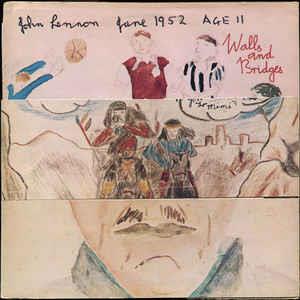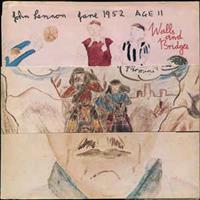x
You have added Walls And Bridges ~ LP x1 180g to your shopping cart!
UK 1999 Pressing.
Because most of the record's lyrics explore the barriers separating himself from others, while also frequently expressing the hope that these might somehow be overcome, John chose the title Walls and Bridges. "Walls," said Lennon, "keep you in either protectively or otherwise, and bridges get you somewhere else." In its searing emotional intensity, Walls and Bridges resembles John's first post-Beatle album, while the richly textured arrangements and melodic diversity recall Imagine. But Walls and Bridges also features an ingredient that those earlier confessionals conspicuously lacked: vintage Lennon humor, which can go a long way toward alleviating the potential heaviness of John's subject matter.
A renewed determination to find a few laughs even in the face of adversity illuminates every aspect of Walls and Bridges from the inclusion of a brief, good-natured duet between Lennon and 11-year-old son Sean -- along with a booklet of paintings John did himself when he was that age -- to the half dozen playful pseudonyms ranging from Rev. Thumbs Ghurkin (piano) to John's favorite, Dr. Winston O'Boogie (electric guitar); and Lennon's Dylanesque acoustic strumming on "Nobody Loves You When You're Down and Out" is credited to Dwarf McDougal -- Dwarf being Dylan's music company and McDougal the name of his Greenwich Village street.
Walls and Bridges' lusher, more languid songs bring to mind similarly reflective Beatle "classics" like "Strawberry Fields Forever." The most popular of these proved to be "Number Nine Dream," easily the most poignant melody Lennon had written since "Imagine." John and Yoko once considered nine their lucky number and had often cited it in their work. In this song Lennon looks wistfully back at their relationship, which though at the time it "seemed so very real," has now passed into nostalgia as an elusive, magical dream.
On this exquisite recording John draws upon the sort of dream-world effects he had used in his late-Sixties Beatles music: gauze-like orchestrations, tapes of voices whispering "John, John" that are reversed toward the the end of the song, passages written in an imagery language (unlike those on "Sun King," however, these reportedly came to Lennon in an actual dream).
Another Walls and Bridges track, "Bless You," is also dedicated to Yoko. On this song, however, the music is most un-Beatle-like, featuring the sort of jazzy diminished-seventh chord progressions Paul had recently dallied with on Band On the Run's "Bluebird."
In "Steel and Glass" John paints a considerably less charitable portrait of another "old friend of mine" -- a slimy New York wheeler-dealer generally assumed to be Allen Klein. The melody and tough, ominous string arrangement are almost identical to those of "How Do You Sleep?," and its message is no less scathing that its predecessor's.
Walls and Bridges frequently explores a theme rare in the forever-young world of rock 'n' roll: fear of aging and death. "Nobody loves you when you're old and greey" sings the ravaged ex-Beatle. "Everybody loves you when you're six foot in the ground." A hounded self-portrait called "Scared" is prefaced with an actual recording of howling killer wolves.
Yet the aging process also seems to have brought John a more tolerant and philosophical perspective. Instead of "preaching practices," as had once been his wont, the only advice he doles out now is "Whatever gets you thru the night, 'salright, 'salright...." This good-natured and highly danceable track, which preceded Walls and Bridges as a single, features Elton John on piano, organ, and vocal harmonies. During the recording session for Elton's remake of "Lucy In the Sky With Diamonds" Elton made Lennon promise to put in a guest appearance at his forthcoming New York concert should "Whatever Gets You Thru the Night" reach Number One, which despite Lennon's doubts did indeed make it all the way to the top of the charts. On November 28, 1974 he joined Elton on stage at Madison Square Garden to sing both songs.
With the release of Walls and Bridges, everything suddenly seemed to be coming together again for John Lennon. He had succeeded in electrifying a live audience for the first time in two and a half years, scored his first non-Beatle Number One single (oddly enough, the last of the Fab Four to do so), and produced an album that was a success at every conceivable level (honorary critic Ringo Starr only slightly exaggerated the sentiments of many reviewers when he proclaimed Walls and Bridges "the best album of the last five years").
Walls and Bridges first appeared on the Billboard chart on October 12, 1974, reaching #1 and spending a total of 27 weeks. - Nicholas Schaffner, The Beatles Forever, pp. 173-74.
Customer Reviews
LEAVE A REVIEW


